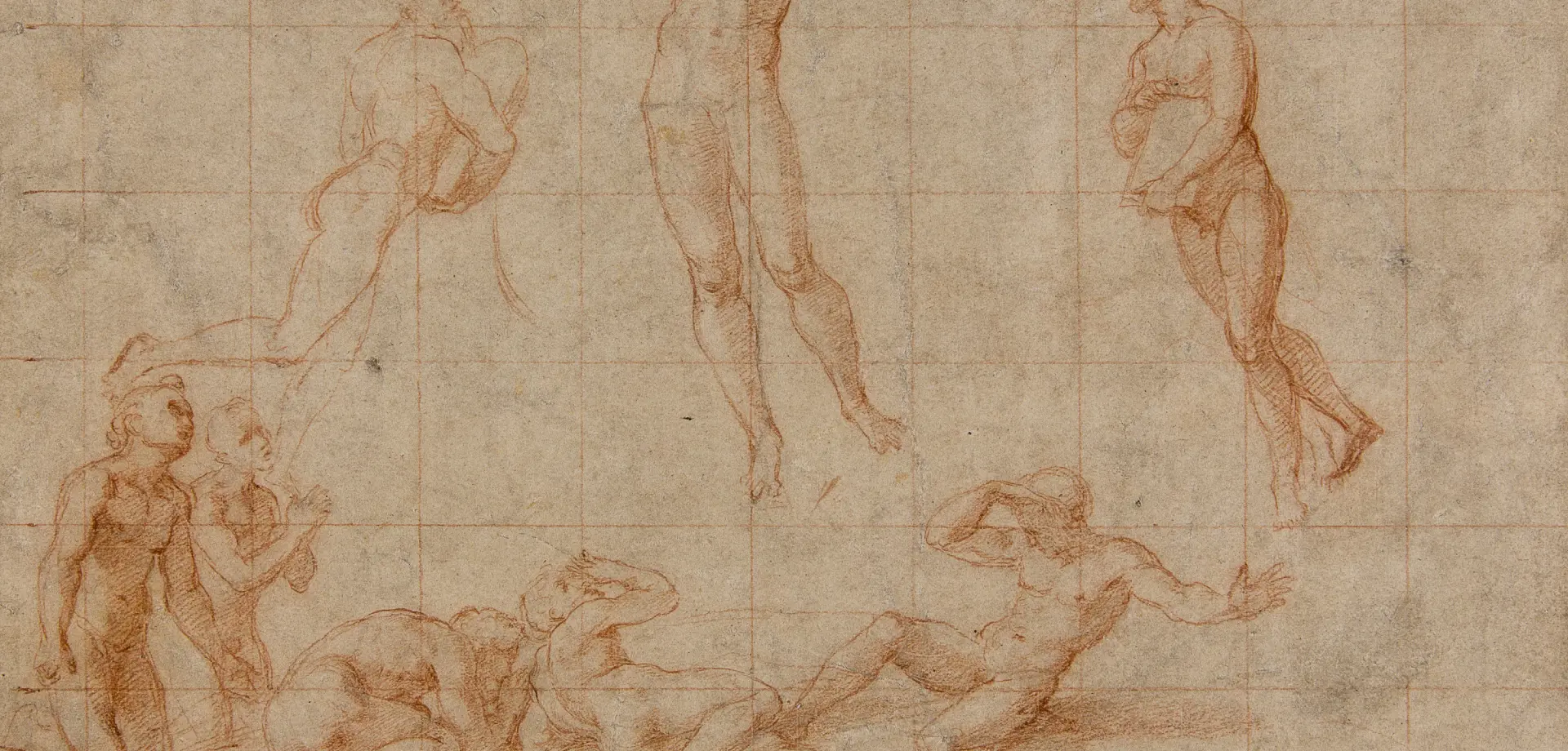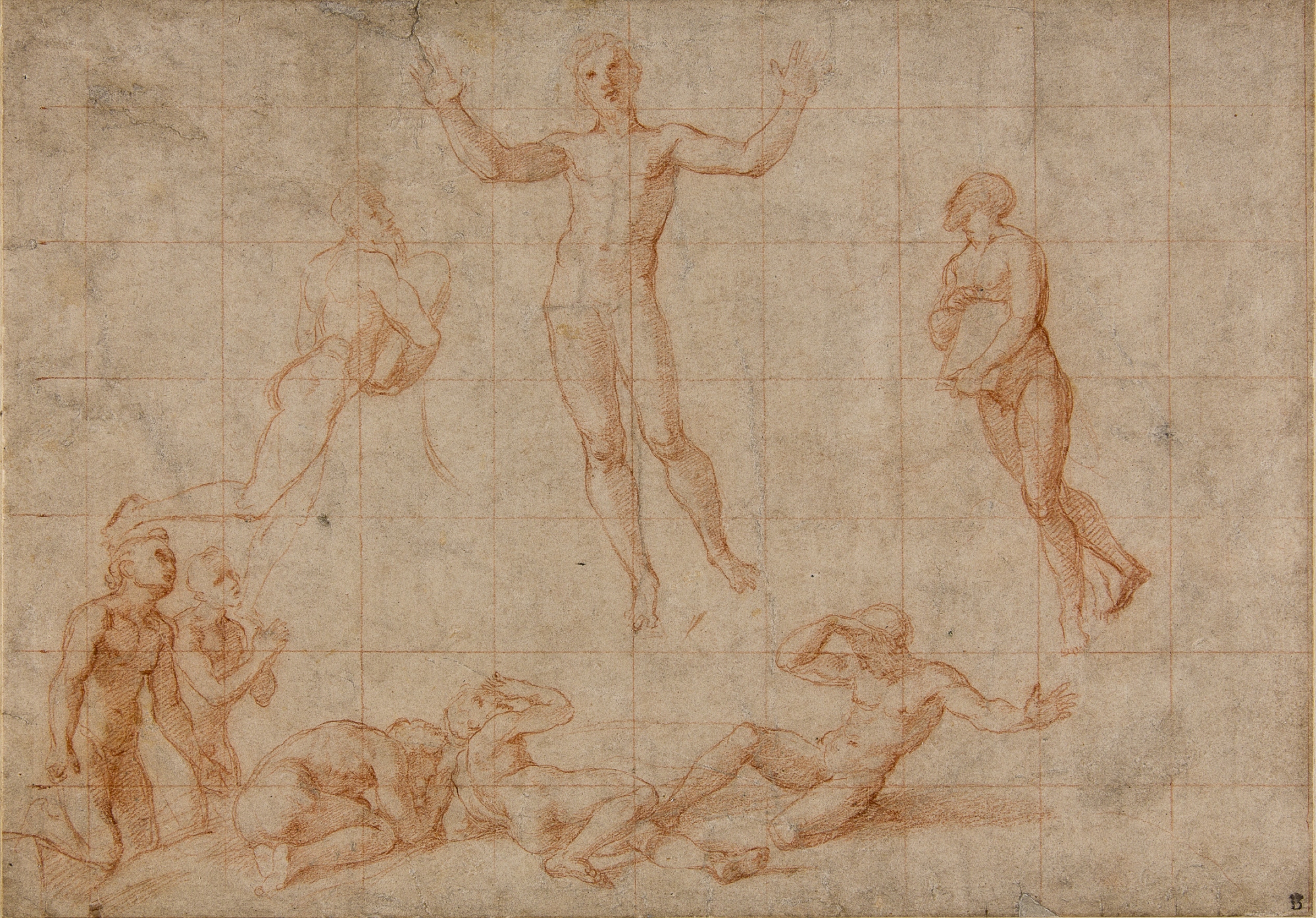
This drawing is a study for the last painting Raphael made before he died at the young age of 37. A close look reveals a number of ways in which Raphael used drawing as part of his creative process.
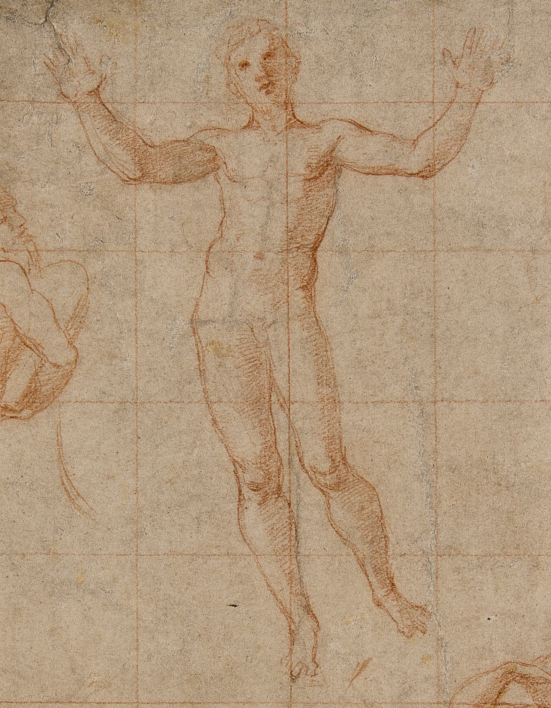
Look at this detail of the figure at the centre of the study.
Take a few moments to think about:
- How Raphael might have scaled up the dimensions of the figure from the study in the final painting
- What the appeal of using red chalk might have been
- How drawing helps an artist’s creative process
- Why he depicts the figure naked/nude
Write down your thoughts on this. If it helps, make a sketch.
You will see that the surface of the study is covered with a grid of squares. Raphael has used a scaling device which would help him transfer the ‘design’ of his drawing from paper to panel. This device, known as squaring, enables an artist to copy the detail of the drawing contained within one square into the corresponding square on a larger surface. In the process of transferring the design square by square, the artist will more successfully and easily retain the original proportions of the drawing. What this tells us is that, at this stage of the creative process, Raphael was planning how to realise his design on a larger scale.
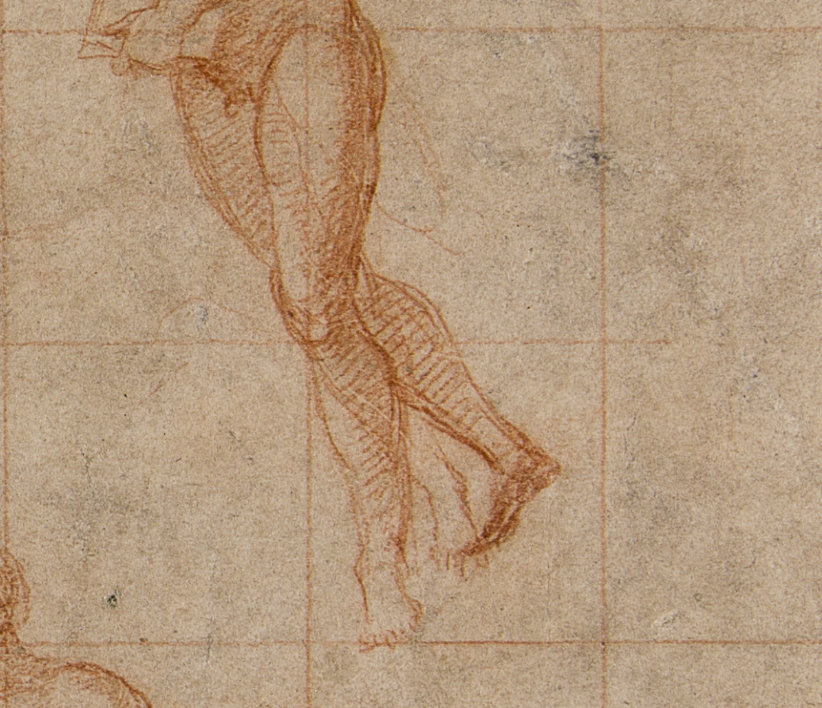
There are other clues in this study that point to Raphael using drawing as a form of exploration or research. Have a good look at this next detail, showing the figure to the right hand side of the study. Do you notice anything unusual?
It looks as if the man has three or possibly even four legs. To the right of the man’s left hip, the outline of a thigh extended behind the torso is faintly visible. Between the man’s shins and feet there is the much clearer outline of a third foot and ankle. Raphael is trying out several different positions for the legs – visible experiments and changes such as these are often described as pentimenti (which is derived from the Italian pentirsi and is used in art historical contexts to refer to changes or alterations an artist has made as they work).
What this tells us is that the study we are looking at was part of a process in which Raphael was testing and improving upon his ideas. Even artists as accomplished as Raphael didn’t get it right first time! One of the many appeals of spending time enjoying an artist’s drawings – or making your own drawings – is that it feels as if you are being invited into the creative thought process.
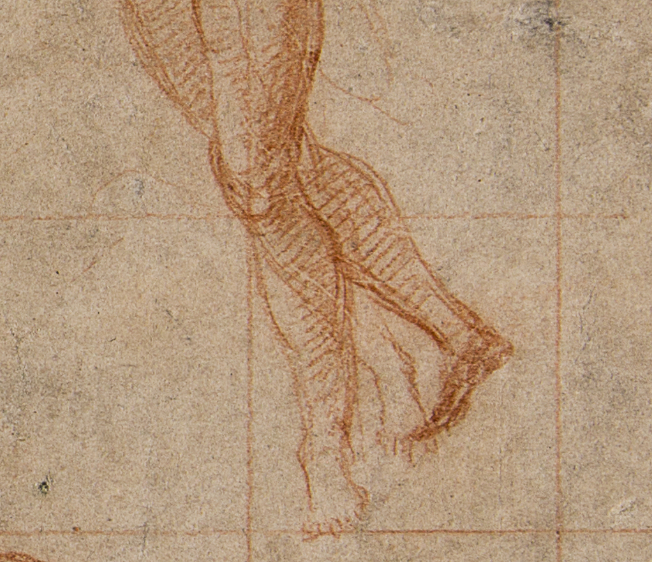
Let’s go a little closer now and think about the material Raphael has used to make this study.
This is usually described as a red chalk drawing. Some of us might think that the material looks more brown than red; it certainly has a rich earth-like quality. Red chalk is a natural material – a hard kind of clay. It is versatile and warm and perhaps it’s easy to see why artists liked to use it when making studies of the naked human figure. It’s possible to use chalk to create the hard line of an accentuated bone but also to suggest the softness of flesh over skeletal structure. Looking at this detail of the lower legs of the man on the right of the drawing, notice how Raphael creates the linear outline of the calf and shin, the softer smudged shadow rounding out the thigh and a series of parallel hatched lines up the calf to suggest volume.
Red chalk had been available as a material long before Raphael was alive but it seems to have come into its own as a medium around the same time as artists started to study the naked human figure.
The drawing we have been looking at is a study for Raphael’s last painting, The Transfiguration. It is worth spending some time looking at the final painting and the study to observe how closely the study has been followed.
Our red chalk study is small in scale, measuring only 350mm in width. The final painting is over four metres in height.


Image right: Raphael, The Transfiguration, oil on panel. Credit Vatican Museums and Galleries, Vatican City De Agostini Picture Library/Bridgeman Images
Our drawing corresponds with the top part of the altarpiece. The finished altarpiece, which is painted onto a wood panel using egg tempera and is now in the Vatican, shows two stories from the Gospel of Matthew in succession; the Transfiguration showing Christ in Glory above and the meeting of the Apostles with the youth who will be cured by Christ below. Our study shows the upper part of the altarpiece composition: Christ in Glory between the prophets Moses and Elijah.
When comparing the drawing with the painting, it becomes more evident that the drawing is a compositional study with such close similarity to the final painting that it was likely Raphael completed it fairly far on in his preparation.
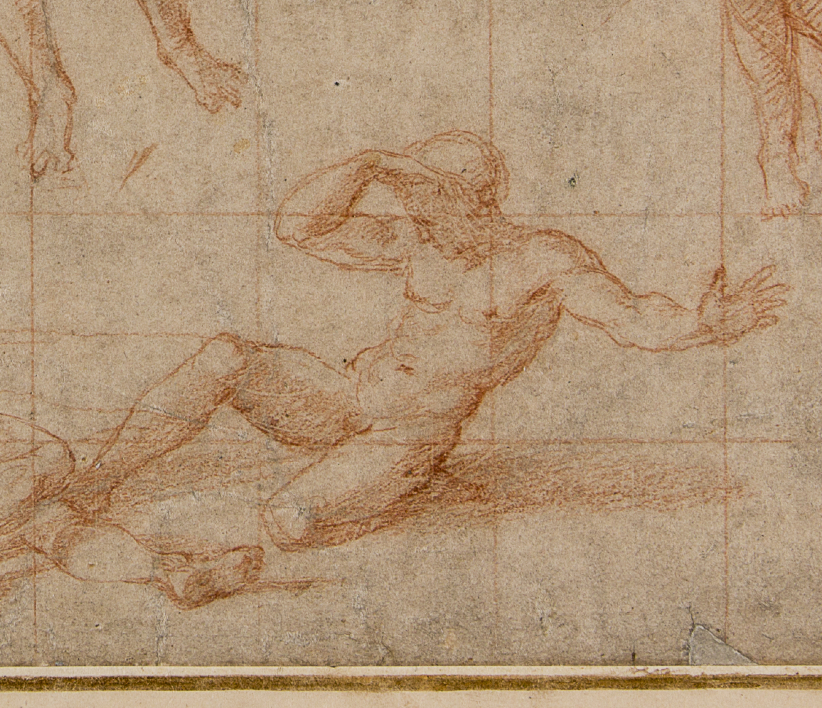
Having drawn the figures as nudes, Raphael clothes and drapes each of them in his final work. Have a look at the study of the figure below Elijah who appears fully clothed in the painting. Engaging with the nude study shown in the drawing enables us to fully appreciate Raphael’s grasp of anatomical structure.
Take a closer look at the foreshortened outstretched left arm and the muscular tension around the stomach as the figure holds this somewhat uncomfortable looking pose. Then look at the same figure in the painting. Little has changed except that now we can see that Raphael was seeking to understand what lies beneath the draped human body. His grasp of underlying structure makes the final clothed form all the better.
A-level specification
Raphael is a named artists on the Art in Renaissance Italy 1420-1520 topic.


